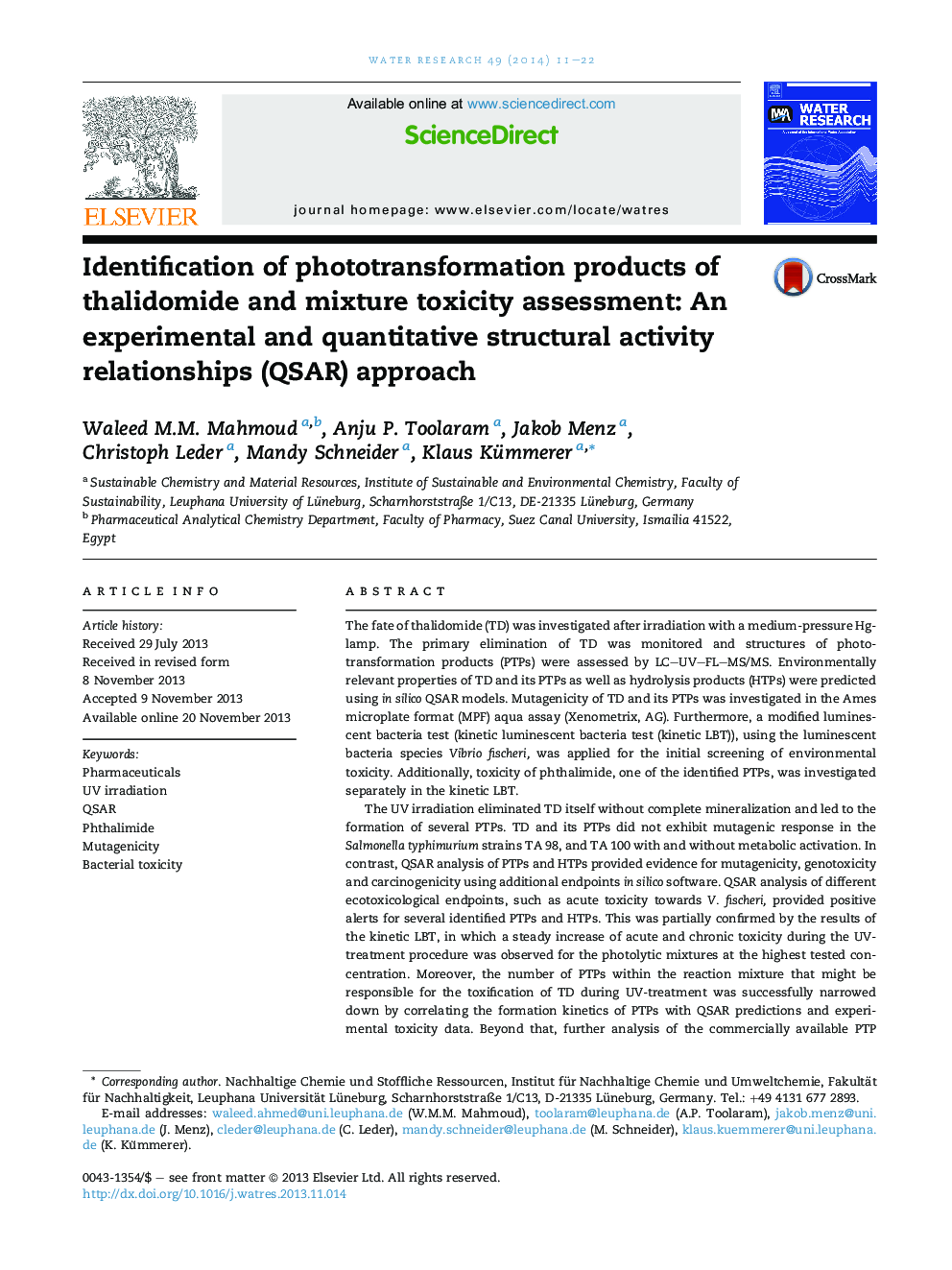| کد مقاله | کد نشریه | سال انتشار | مقاله انگلیسی | نسخه تمام متن |
|---|---|---|---|---|
| 4481687 | 1623119 | 2014 | 12 صفحه PDF | دانلود رایگان |

• UV irradiation eliminated thalidomide (TD) itself without complete mineralization.
• Photolysis of TD led to formation of numerous phototransformation products (PTPs).
• QSAR modules predicted several positive alerts from some of the identified PTPs.
• TD and PTPs do not show mutagenic activity in the Ames test.
• The luminescent bacteria test showed an increase in toxicity during photolysis.
The fate of thalidomide (TD) was investigated after irradiation with a medium-pressure Hg-lamp. The primary elimination of TD was monitored and structures of phototransformation products (PTPs) were assessed by LC–UV–FL–MS/MS. Environmentally relevant properties of TD and its PTPs as well as hydrolysis products (HTPs) were predicted using in silico QSAR models. Mutagenicity of TD and its PTPs was investigated in the Ames microplate format (MPF) aqua assay (Xenometrix, AG). Furthermore, a modified luminescent bacteria test (kinetic luminescent bacteria test (kinetic LBT)), using the luminescent bacteria species Vibrio fischeri, was applied for the initial screening of environmental toxicity. Additionally, toxicity of phthalimide, one of the identified PTPs, was investigated separately in the kinetic LBT.The UV irradiation eliminated TD itself without complete mineralization and led to the formation of several PTPs. TD and its PTPs did not exhibit mutagenic response in the Salmonella typhimurium strains TA 98, and TA 100 with and without metabolic activation. In contrast, QSAR analysis of PTPs and HTPs provided evidence for mutagenicity, genotoxicity and carcinogenicity using additional endpoints in silico software. QSAR analysis of different ecotoxicological endpoints, such as acute toxicity towards V. fischeri, provided positive alerts for several identified PTPs and HTPs. This was partially confirmed by the results of the kinetic LBT, in which a steady increase of acute and chronic toxicity during the UV-treatment procedure was observed for the photolytic mixtures at the highest tested concentration. Moreover, the number of PTPs within the reaction mixture that might be responsible for the toxification of TD during UV-treatment was successfully narrowed down by correlating the formation kinetics of PTPs with QSAR predictions and experimental toxicity data. Beyond that, further analysis of the commercially available PTP phthalimide indicated that transformation of TD into phthalimide was not the cause for the toxification of TD during UV-treatment.These results provide a path for toxicological assessment of complex chemical mixtures and in detail show the toxic potential of TD and its PTPs as well as its HTPs. This deserves further attention as UV irradiation might not always be a green technology, because it might pose a toxicological risk for the environment in general and specifically for water compartments.
Figure optionsDownload high-quality image (151 K)Download as PowerPoint slide
Journal: Water Research - Volume 49, 1 February 2014, Pages 11–22